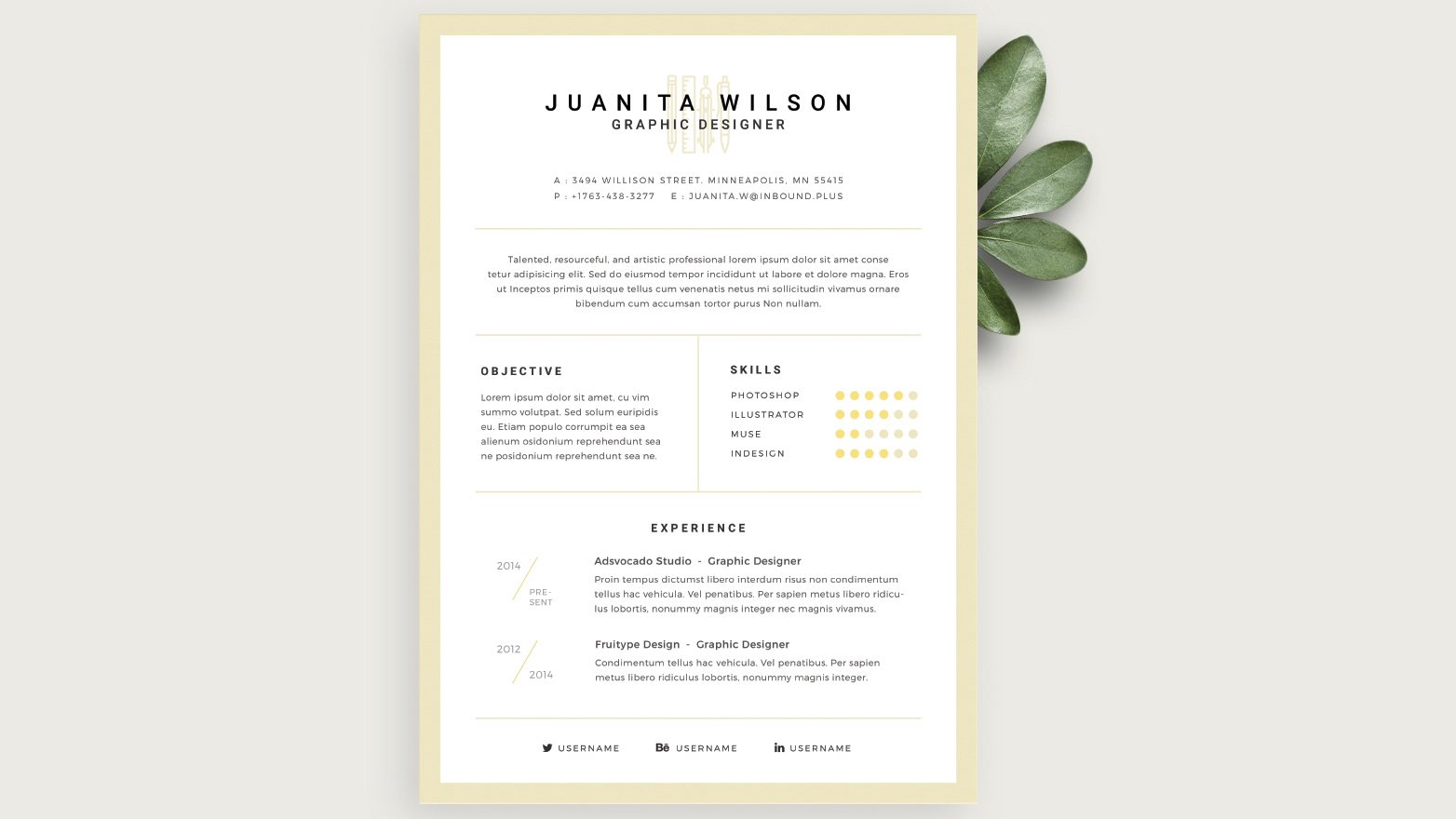How to be the designer every agency wants to hire
Creativity is an obvious quality to showcase in your portfolio, resumés and applications and interviews for dream jobs. But how do you showcase it when you’re just starting out?
With a lack of experience under your designer tool belt, what other skills or attributes can you highlight and – more importantly – what other qualities are companies looking for when they hire?
Here we've got the inside scoop on what modern companies want to see when they send out a call for candidates.
01. Do some quality training

You may begin thinking about a career in graphic design before you’ve even chosen a course of further study. Or for some people, it's an industry they move into from another field, having found a love for creativity and design in another role.
So do you need a degree in the subject, or another qualification altogether? Or can you be self-taught? You may be glad to hear that there is no set path that will guarantee entry into the industry and each company will be looking for a particular set of skills and qualities in a candidate.
It depends on the individual, but as a general rule, an educational setting can add a lot of benefits. Experiences such as taking constructive criticism on board, working in a team environment, or mentoring, for example, can be extremely beneficial. Once you have gained some level of training or experience, the key is to keep your skills and knowledge up-to-date.
Everyone is different, because their areas of expertise differ but generally, magazines like Computer Arts are good at covering a lot of areas, and there are plenty of free online graphic design courses to get you started.
Across the board, inspiration websites such as Pinterest, The Dieline (for packaging) and Behance (for design portfolios) are popular. Blogs like howdesign.com are also a great source of inspiration and industry news and analysis.
When it comes to books, we would recommend by Michael Johnson, Know Your Onions by Drew de Soto and Why Fonts Matter by Sarah Hyndman. Check our list of 30 books every graphic designer should read for more ideas.
02. Craft a standout portfolio

Be productive. A library of work is one of the key indicators of a natural designer; someone with genuine flair and passion for what they do, regardless of whether there’s a pay packet or deadline attached to it. That’s why so many young graphic designers are running their own online portfolios like industry blogs.
The sooner you get your name out there, the better. Growing a personal brand publicly in this way will also give you a deeper understanding of the challenges and current social climate experienced by the clients and companies you eventually aspire to work for. Read our articles on how to craft a standout portfolio and how to craft the perfect portfolio in a day for tips.
If you don’t feel confident building your own digital shopfront just yet, you can begin by contributing to a friend’s or seeking out industry blogs and asking to contribute a piece. How will you know when to charge for your services? Use your intuition. You’ll get a feel for when people are taking advantage, and you need to make sure it doesn’t steal your focus from your training course or study.
Don’t discard the journey for the finished product on any of these initial projects. Showing your workings, whether it be in concepts of sketches, gives a great insight into how you think and therefore how you might work together with an existing design team. This is something a company will be taking into consideration alongside your existing talent and potential for growth.
03. Show your skills in your CV/resumé

When it comes to CVs/resumés in the graphic design world, the tendency can be to assume that ‘bigger is better.’ However, this assumption is too simplistic.
Do some research into the employer. They might strike you as looking for something off the wall that will stand out, but generally you will want to keep it simple and factual, showing some artistic flair. The way you use typography is important.
Industry employers aren’t recruiting based on buzz words, but there are some key elements that graphic design teams across the board will be looking out for, and therefore you will want to find a way to showcase these in your application. Enthusiasm is key, as is innate creativity, but a creativity that is matched with a decent level of technical ability. Relevant experience is obviously something you should highlight if you possess it, as is flexibility.
Too often, flexibility is viewed in literal terms, such as flexibility of working hours. But if you can, show a flexible attitude to your work, such as a willingness to evolve and grow into a role or new areas, or to be prepared to try new things. These would all be positive selling points in your application.
Read our examples of 30 brilliantly creative resumés, our article on how to create the perfect design resumé and check out these free resumé templates to get started.
04. Dazzle with networking skills

Developing your soft skills and gaining confidence is essential in any job. And graphic design is no different to many modern industries in its reliance on good personal relationship and communication skills, regardless of the latest technological advancements.
Without an existing role, or as a student or graduate on the periphery of the industry world, it can seem daunting to know how to begin with networking, but – as our article how to network successfully says – social media groups and pages are a good place to dip your toe in, comfortably from your chair, to start to get a feel for your local industry.
There are some great events too, such as Offset, which takes place in Dublin every year. The workshops there are a great place to meet other creatives and start to build your own networks. Entering contests such as D&AD's New Blood Awards can also be a great way to meet other new designers and to get noticed.
05. Stand out from the crowd in your application

With all that said, graphic design remains a competitive industry, brimming with eager, creative young talent. So it’s safe to assume that your application for your first graphic design gig will be one among many. That’s why it's so important in the modern working world to find those points of difference, to find what sets you apart and give yourself that slight advantage that could be enough to get you hired.
If you’re still studying or about to embark on a course, do seek out opportunities to do an internship – it is important to get as much studio and wider industry experience as possible. Some agencies will also take on interns over the holidays, so approach them all to ask about their policies on that. Read our article how to transform a design internship into a job for top tips to make the most of the time.
Treat every application individually – keeping your resumé up to date is obviously important but similarly, take the time to tailor it where you can for each role you apply for, checking that you’re addressing everything they’ve asked for. They have taken time to make that list, so take the time to cover it.
Start building your brand early – it’s about more than a published portfolio. Your online footprint, your networking, your professional standing in the industry is a journey and it's one you should start as soon as possible, not after you graduate. Sign up to LinkedIn and get your name out there.
Begin the habit of perpetual learning – it's one you will take with you into your career, and it will impress potential employers. Keep up to date with what’s happening in your local industry but also, more regionally and then globally. Look at trends, laws, opinion pieces and awards. Online tutorials are a great place to brush up on your technical skills regularly. They are just as important as creative flair.
Contributer : Creative Bloq
 Reviewed by mimisabreena
on
Thursday, September 13, 2018
Rating:
Reviewed by mimisabreena
on
Thursday, September 13, 2018
Rating:














No comments:
Post a Comment